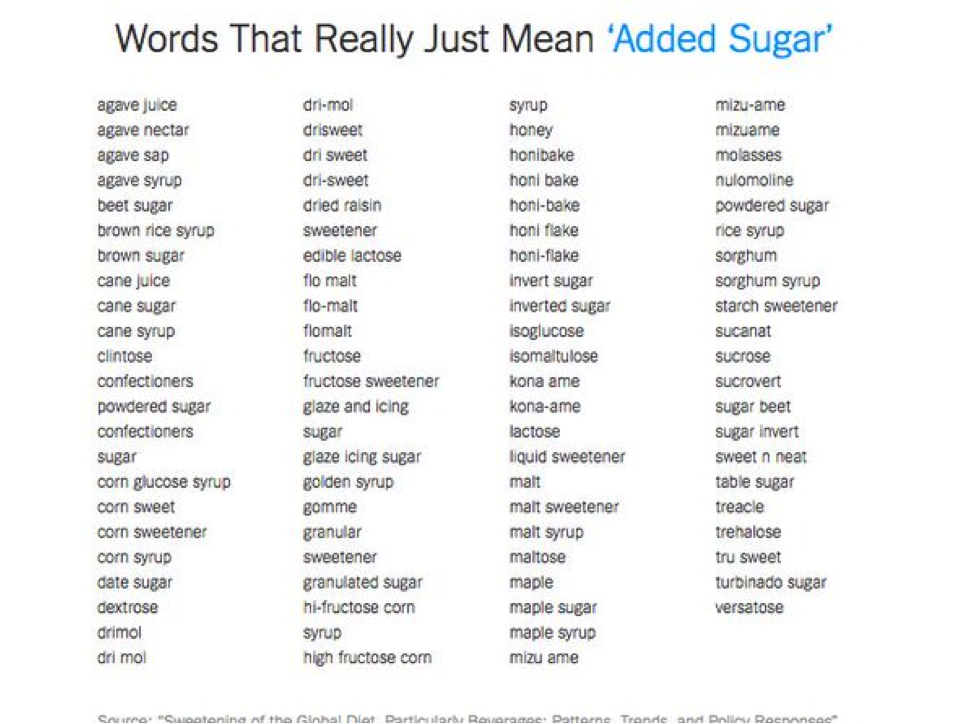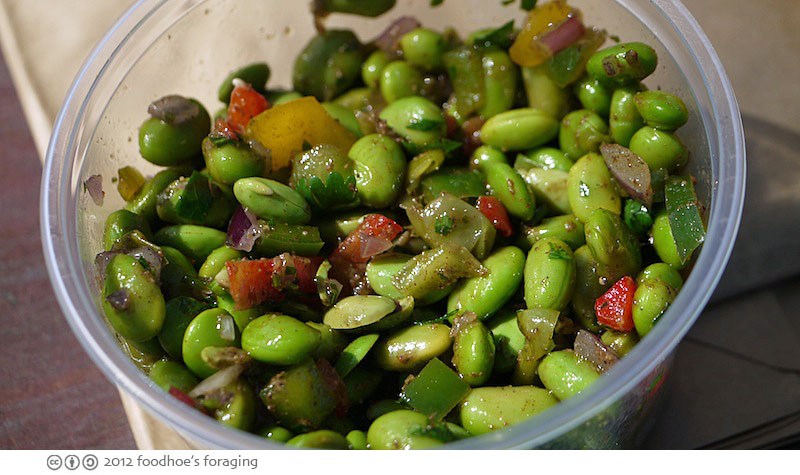 Added sugars have become a hot topic in nutrition and most of us have been advised to reduce our intake of sugar-sweetened beverages and desserts. This National Heart Health Month, it’s important to understand the role of added sugars in cardiovascular disease and easy ways to reduce our intake without sacrificing our favorite treats.
Added sugars have become a hot topic in nutrition and most of us have been advised to reduce our intake of sugar-sweetened beverages and desserts. This National Heart Health Month, it’s important to understand the role of added sugars in cardiovascular disease and easy ways to reduce our intake without sacrificing our favorite treats.
 Sugar seems to be hiding everywhere in today’s food supply, so knowing how to identify different sources of sugar is the first step to making heart-healthy choices. The Nutrition Facts Label is a good place start; it will tell you the amount of sugar in each serving, but it doesn’t differentiate between naturally-occurring and added sugars. Naturally-occurring sugars include the fructose in fruits and vegetables and the lactose in cow’s milk. These sugars are packaged along with essential nutrients including Protein, Calcium, and Vitamin C. Added sugars, on the other hand, are added during processing or preparation. Added sugars contribute calories to your diet, but no beneficial nutrients. Don’t worry, with a quick glance at the ingredients list you’ll be able to spot added sugars and steer clear! Look out for the added sugars hiding behind all these different names…
Sugar seems to be hiding everywhere in today’s food supply, so knowing how to identify different sources of sugar is the first step to making heart-healthy choices. The Nutrition Facts Label is a good place start; it will tell you the amount of sugar in each serving, but it doesn’t differentiate between naturally-occurring and added sugars. Naturally-occurring sugars include the fructose in fruits and vegetables and the lactose in cow’s milk. These sugars are packaged along with essential nutrients including Protein, Calcium, and Vitamin C. Added sugars, on the other hand, are added during processing or preparation. Added sugars contribute calories to your diet, but no beneficial nutrients. Don’t worry, with a quick glance at the ingredients list you’ll be able to spot added sugars and steer clear! Look out for the added sugars hiding behind all these different names…

*Thanks to Professor Barry Popkin and Dr. Corinna Hawkes for this list
 The most common sources of added sugars in the American diet are sodas, juices, sports drinks, cakes, pies, and cookies. The average American consumes over 67.5g of added sugars each day, accounting for 270 calories. Intake among children is even higher, averaging 80g each day accounting for 320 calories. This level of intake far exceeds the recommendations of the American Heart Association.
The most common sources of added sugars in the American diet are sodas, juices, sports drinks, cakes, pies, and cookies. The average American consumes over 67.5g of added sugars each day, accounting for 270 calories. Intake among children is even higher, averaging 80g each day accounting for 320 calories. This level of intake far exceeds the recommendations of the American Heart Association.
| American Heart Association Guidelines for Intake of Added Sugars | ||
| Men | 36g | 150 Calories |
| Women | 25g | 100 Calories |
| Children | 25g | 100 Calories |
| Children under 2 | avoid | avoid |
These recommendations are based on evidence supporting the maintenance of a healthy heart. Most of us equate a high intake of fat with elevated cholesterol and heart disease, but don’t realize the contribution of added sugars to cardiovascular complications. Added sugars add empty calories to the diet and contribute to unhealthy weight gain. Overweight and obesity is a risk factor for type 2 diabetes, high blood pressure, and high cholesterol, all factors in the development of heart disease. Some evidence suggests a high intake of added sugars increases triglycerides and blood pressure in children and adolescents independent of weight gain.
The most familiar health impact of added sugars is their effect on blood sugar. Complex carbohydrates from whole grains and whole foods keep blood sugar steady, but added sugars cause a sharp increase in blood sugar. This sharp increase causes an inflammatory response and may result in damage to blood vessel walls. Vessel damage is the first step of atherosclerosis, the build-up of plaque in our blood vessels that can eventually lead to blood clots, stroke, or heart attack.
 Luckily, you can cut down on the added sugars in your diet today! Start at the grocery store by swapping sweetened processed foods for whole foods like fresh fruits and vegetables and low-fat dairy. Try substituting Stevia or Monkfruit sweetener for table sugar in your next recipe. Check out this great AHA recipe for Frozen Yogurt Bark for a healthy treat and Edamame and Penne Salad with Feta as well as other recipes on their website.
Luckily, you can cut down on the added sugars in your diet today! Start at the grocery store by swapping sweetened processed foods for whole foods like fresh fruits and vegetables and low-fat dairy. Try substituting Stevia or Monkfruit sweetener for table sugar in your next recipe. Check out this great AHA recipe for Frozen Yogurt Bark for a healthy treat and Edamame and Penne Salad with Feta as well as other recipes on their website.
Finally, talk to your Registered Dietitian Nutritionist about how to make and eat more nutritious treats and saving those less nutritious sweets for once and a while. Continue promoting heart health all year long.